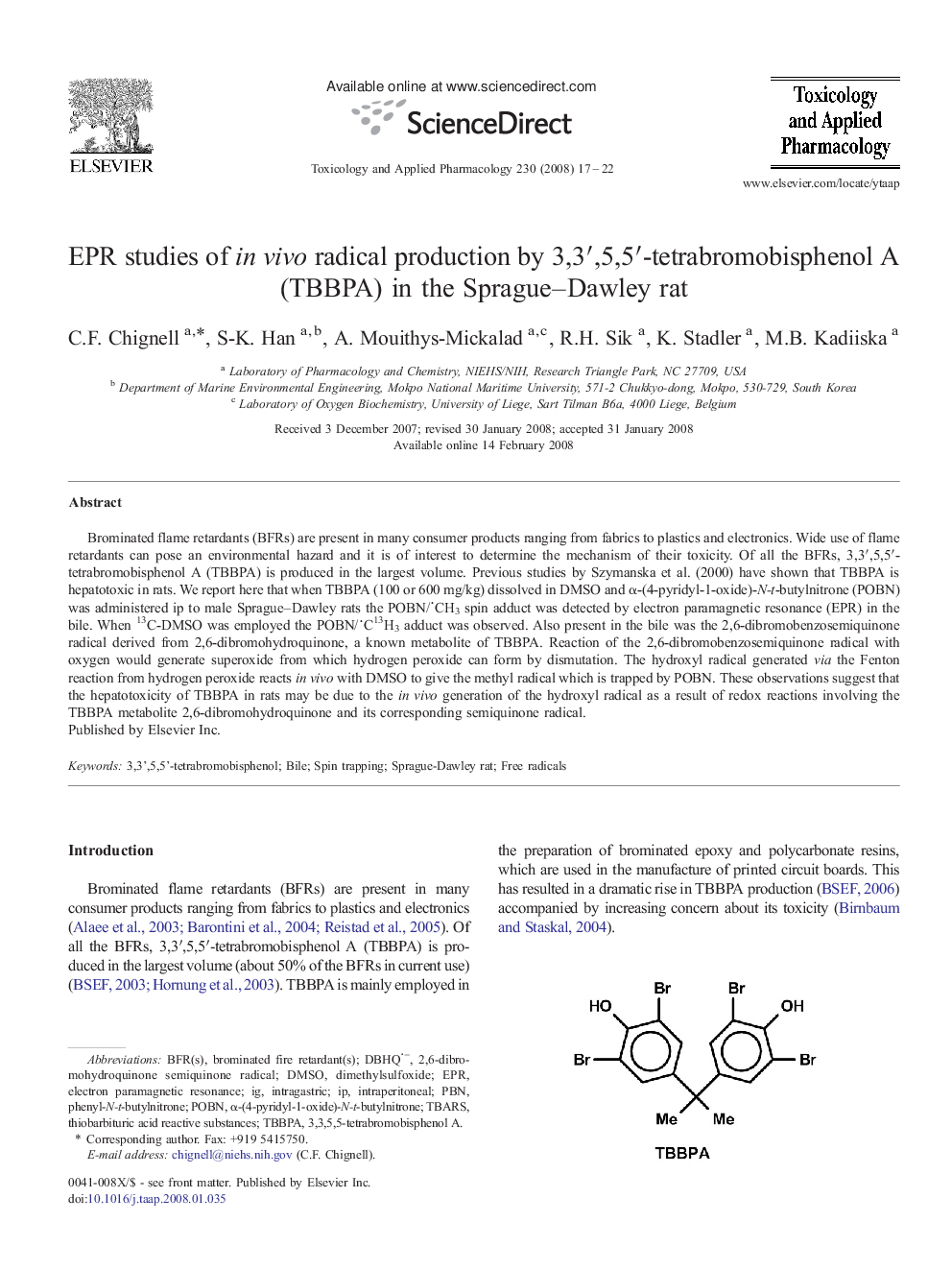| Article ID | Journal | Published Year | Pages | File Type |
|---|---|---|---|---|
| 2571102 | Toxicology and Applied Pharmacology | 2008 | 6 Pages |
Brominated flame retardants (BFRs) are present in many consumer products ranging from fabrics to plastics and electronics. Wide use of flame retardants can pose an environmental hazard and it is of interest to determine the mechanism of their toxicity. Of all the BFRs, 3,3′,5,5′-tetrabromobisphenol A (TBBPA) is produced in the largest volume. Previous studies by Szymanska et al. (2000) have shown that TBBPA is hepatotoxic in rats. We report here that when TBBPA (100 or 600 mg/kg) dissolved in DMSO and α-(4-pyridyl-1-oxide)-N-t-butylnitrone (POBN) was administered ip to male Sprague–Dawley rats the POBN/CH3 spin adduct was detected by electron paramagnetic resonance (EPR) in the bile. When 13C-DMSO was employed the POBN/C13H3 adduct was observed. Also present in the bile was the 2,6-dibromobenzosemiquinone radical derived from 2,6-dibromohydroquinone, a known metabolite of TBBPA. Reaction of the 2,6-dibromobenzosemiquinone radical with oxygen would generate superoxide from which hydrogen peroxide can form by dismutation. The hydroxyl radical generated via the Fenton reaction from hydrogen peroxide reacts in vivo with DMSO to give the methyl radical which is trapped by POBN. These observations suggest that the hepatotoxicity of TBBPA in rats may be due to the in vivo generation of the hydroxyl radical as a result of redox reactions involving the TBBPA metabolite 2,6-dibromohydroquinone and its corresponding semiquinone radical.
